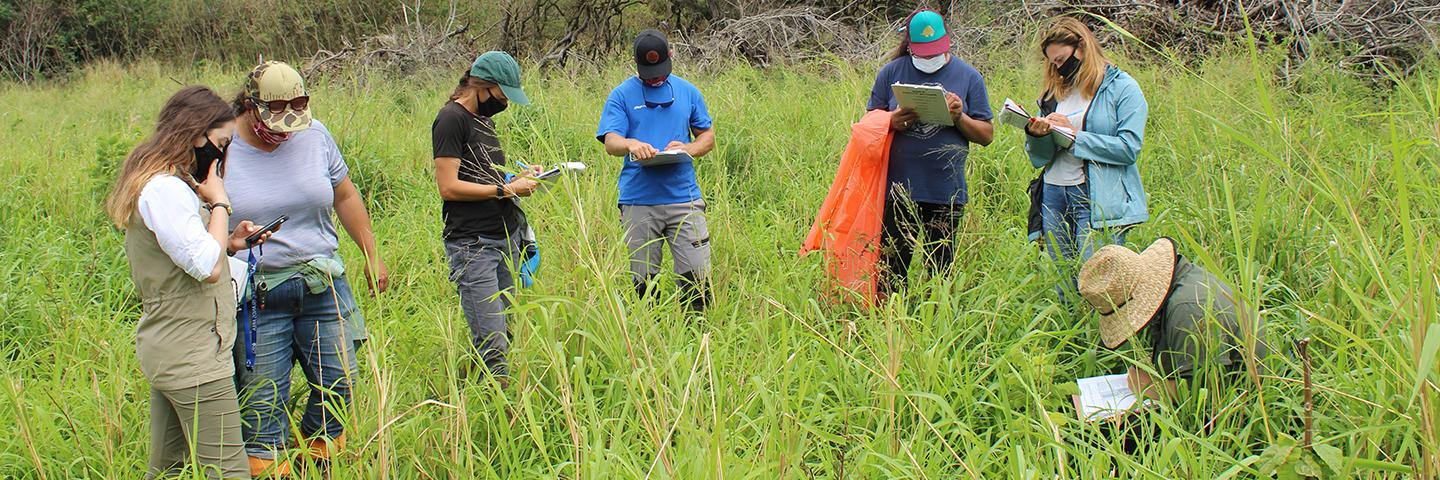
Agricultural Conservation Easement Program is only available in Hawaii, American Samoa, Guam, and CNMI.
On This Page
Overview
The Agricultural Conservation Easement Program (ACEP) protects the agricultural viability and related conservation values of eligible land by preventing conversion of productive working lands to non-agricultural uses. The program helps restore, conserve or enhance eligible grazing land and wetlands through Agricultural Land Easements (ALE) and Wetland Reserve Easements (WRE).
Agricultural Land Easements
Agricultural Land Easements, or ACEP-ALE, provide matching funds to eligible local entities to acquire conservation easements on privately-owned farm and ranch land, grassland and nonindustrial forest land. Eligible partners include state and local governments and non-governmental organizations that have farmland, rangeland or grassland protection programs.
Wetland Reserve Easements
Wetland Reserve Easements, or ACEP-WRE, help private landowners protect, restore and enhance farmed or converted wetlands which have been previously degraded due to agricultural uses. NRCS administers Wetland Reserve Easements through purchase agreements with eligible landowners in a similar application process as other NRCS programs and prioritizes applications based on the easement’s potential for protecting and enhancing habitat for migratory birds and other wildlife.
How to get Started?
The first step is to contact your local NRCS office or the Pacific Islands Area ACEP Program Manager to discuss your goals and eligibility for ACEP programs and learn the appropriate next steps.
NRCS accepts applications for conservation programs on a continuous basis; however, customers should apply by state-specific ranking dates to be considered for the current funding cycle.
Pacific Islands Area Program Deadlines & Ranking Dates
Round 1
Signup Deadline: November 3, 2023
Ranking: February 14, 2024
Funding Selections: February 29, 2024
Obligation: June 1, 2024
Round 2
Signup Deadline: March 8, 2024
Ranking: June 13, 2024
Funding Selections: June 17, 2024
Obligation: September 5, 2024
Round 3
Signup Deadline: May 1, 2024
Ranking: TBD (based on available funding)
Funding Selections: TBD (based on available funding)
Obligation: TBD (based on available funding)
To learn more about ACEP, contact your local NRCS office or the Pacific Islands Area ACEP Program Manager.
Ranking Data
Pacific Islands Area ACEP Program Contact
Zephyr Usinger
State CSP/ACEP Program Manager
Lihue, Hawaii
Phone: 808-861-0695
E-mail: zephyr.usinger@usda.gov
Ready to get started?
Contact your local service center to start your application.
How to Get Assistance
Do you farm or ranch and want to make improvements to the land that you own or lease?
Natural Resources Conservation Service offers technical and financial assistance to help farmers, ranchers and forest landowners.

To get started with NRCS, we recommend you stop by your local NRCS field office. We’ll discuss your vision for your land.
NRCS provides landowners with free technical assistance, or advice, for their land. Common technical assistance includes: resource assessment, practice design and resource monitoring. Your conservation planner will help you determine if financial assistance is right for you.
We’ll walk you through the application process. To get started on applying for financial assistance, we’ll work with you:
- To fill out an AD 1026, which ensures a conservation plan is in place before lands with highly erodible soils are farmed. It also ensures that identified wetland areas are protected.
- To meet other eligibility certifications.
Once complete, we’ll work with you on the application, or CPA 1200.
Applications for most programs are accepted on a continuous basis, but they’re considered for funding in different ranking periods. Be sure to ask your local NRCS district conservationist about the deadline for the ranking period to ensure you turn in your application in time.
As part of the application process, we’ll check to see if you are eligible. To do this, you’ll need to bring:
- An official tax ID (Social Security number or an employer ID)
- A property deed or lease agreement to show you have control of the property; and
- A farm number.
If you don’t have a farm number, you can get one from USDA’s Farm Service Agency. Typically, the local FSA office is located in the same building as the local NRCS office. You only need a farm number if you’re interested in financial assistance.
NRCS will take a look at the applications and rank them according to local resource concerns, the amount of conservation benefits the work will provide and the needs of applicants. View Application Ranking Dates by State.
If you’re selected, you can choose whether to sign the contract for the work to be done.
Once you sign the contract, you’ll be provided standards and specifications for completing the practice or practices, and then you will have a specified amount of time to implement. Once the work is implemented and inspected, you’ll be paid the rate of compensation for the work if it meets NRCS standards and specifications.

